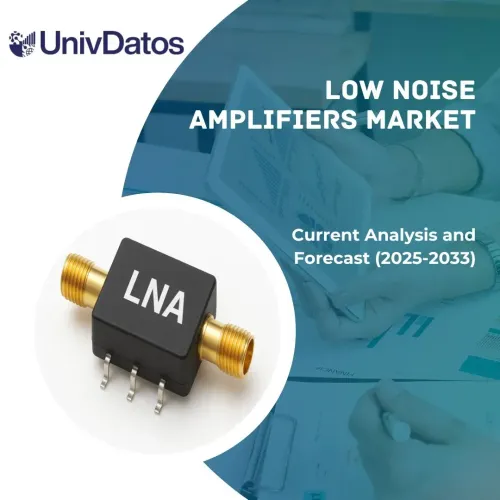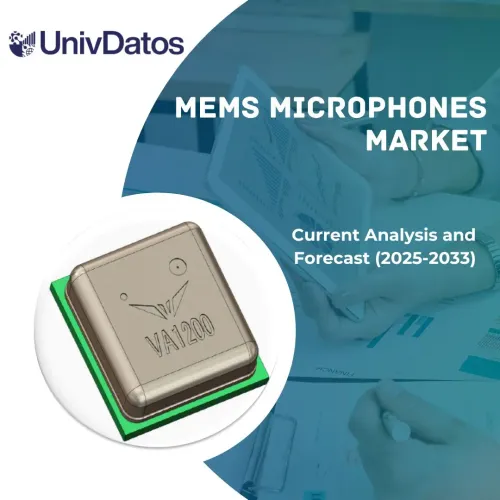- Trang chủ
- Về chúng tôi
- Ngành
- Dịch vụ
- Đọc
- Liên hệ với chúng tôi
Thị trường Nhiệt kế Điểm sương: Phân tích Hiện tại và Dự báo (2024-2032)
Nhấn mạnh vào Loại (Máy đo điểm sương gắn sàn và Máy đo điểm sương cầm tay); Ứng dụng (Công nghiệp thực phẩm, Công nghiệp dầu khí và Các ngành khác); và Khu vực/Quốc gia
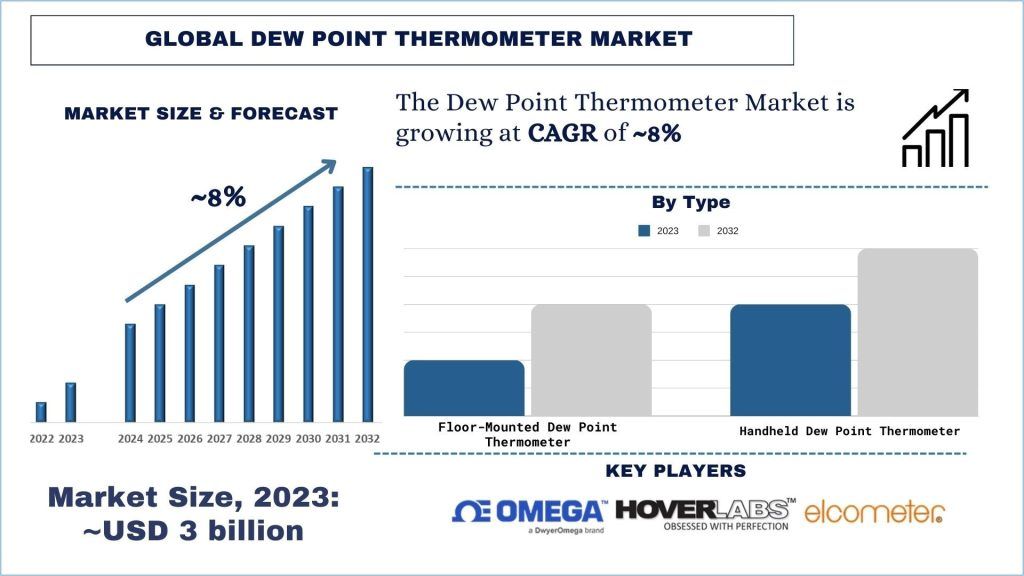
Quy mô & Dự báo Thị trường Nhiệt kế Điểm sương Toàn cầu
Quy mô thị trường nhiệt kế điểm sương toàn cầu được định giá khoảng 3 tỷ USD vào năm 2023 và dự kiến sẽ tăng trưởng với tốc độ CAGR mạnh mẽ khoảng 8% trong giai đoạn dự báo (2024-2032) do việc áp dụng ngày càng nhiều các hệ thống tự động hóa trong các ngành sản xuất và chế biến, đòi hỏi các phép đo độ ẩm chính xác.
Phân tích Thị trường Nhiệt kế Điểm sương Toàn cầu
Quy mô thị trường nhiệt kế điểm sương trên toàn cầu đang mở rộng do một số yếu tố. Đặc trưng của thị trường là nhu cầu ngày càng tăng đối với nhiệt kế điểm sương cầm tay và di động cho các ứng dụng hiện trường. Hơn nữa, các quan hệ đối tác và hợp tác chiến lược đang tăng cường sự thâm nhập thị trường, trong khi các nỗ lực tiếp thị có mục tiêu đang giáo dục khách hàng tiềm năng về lợi ích và ứng dụng của nhiệt kế điểm sương, đóng góp chung vào quỹ đạo tăng trưởng mạnh mẽ của thị trường.
Ví dụ: vào tháng 11 năm 2023, PCE Instruments UK Ltd. đã ra mắt PCE-HT 70-ICA. PCE-HT 70-ICA là một nhiệt kế điểm sương nhỏ gọn của PCE Instruments. Nó có tuổi thọ pin dài và có thể lưu trữ tới 16.000 giá trị đo được. Nhiệt kế bao gồm chứng chỉ hiệu chuẩn ISO, thường được yêu cầu để tuân thủ DIN ISO 9000.
Xu hướng Thị trường Nhiệt kế Điểm sương Toàn cầu
Phần này thảo luận về các xu hướng thị trường chính đang ảnh hưởng đến các phân khúc khác nhau của thị trường nhiệt kế điểm sương toàn cầu, theo xác định của nhóm chuyên gia nghiên cứu của chúng tôi.
Phân khúc Nhiệt kế Điểm sương Gắn sàn Chuyển đổi Ngành
Phân khúc “Nhiệt kế Điểm sương Gắn sàn” thúc đẩy thị trường Nhiệt kế Điểm sương bằng cách cung cấp các giải pháp giám sát ổn định, chính xác và liên tục cho các ứng dụng công nghiệp và thương mại. Các thiết bị này rất cần thiết trong môi trường mà việc kiểm soát độ ẩm chính xác là rất quan trọng, chẳng hạn như trong các cơ sở sản xuất, kho lưu trữ và hệ thống HVAC. Cấu trúc mạnh mẽ và khả năng xử lý dữ liệu khối lượng lớn khiến chúng trở nên lý tưởng để tích hợp vào các hoạt động quy mô lớn, đảm bảo hiệu suất tối ưu và tuân thủ các tiêu chuẩn môi trường nghiêm ngặt. Bằng cách cung cấp các phép đo đáng tin cậy và nhất quán, nhiệt kế điểm sương gắn sàn giúp các ngành duy trì chất lượng sản phẩm, ngăn ngừa ăn mòn thiết bị và cải thiện hiệu quả năng lượng, từ đó thúc đẩy nhu cầu và tăng trưởng thị trường.
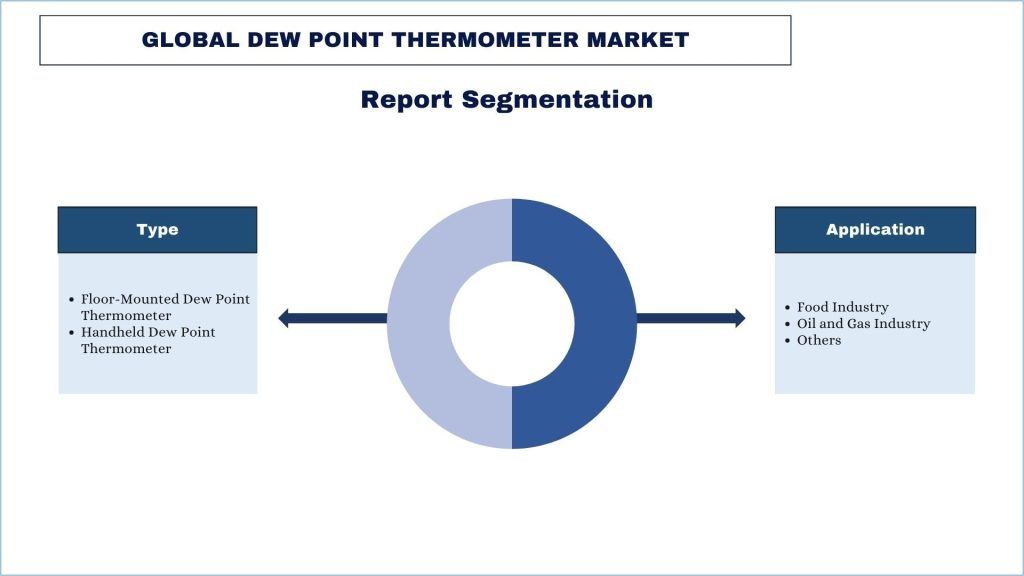
Châu Á - Thái Bình Dương Dự kiến sẽ Tăng trưởng với CAGR Đáng kể Trong Giai đoạn Dự báo
Thị trường nhiệt kế điểm sương ở Châu Á - Thái Bình Dương đang trải qua sự tăng trưởng mạnh mẽ, được thúc đẩy bởi quá trình công nghiệp hóa và đô thị hóa nhanh chóng ở các quốc gia như Trung Quốc, Ấn Độ và Nhật Bản. Nhu cầu ngày càng tăng đối với các hệ thống kiểm soát khí hậu hiệu quả trong các ngành công nghiệp khác nhau, chẳng hạn như sản xuất, dược phẩm và HVAC, là một yếu tố tăng trưởng chính. Ngoài ra, các quy định về môi trường nghiêm ngặt và nhu cầu giám sát chính xác độ ẩm và nhiệt độ trong các quy trình quan trọng đang thúc đẩy việc áp dụng thị trường. Những tiến bộ công nghệ và sự gia tăng của các thiết bị cầm tay và di động tiếp tục tăng cường động lực thị trường, làm cho nhiệt kế điểm sương trở nên dễ tiếp cận và linh hoạt hơn cho nhiều ứng dụng khác nhau trên toàn khu vực.
Tổng quan về Ngành Nhiệt kế Điểm sương Toàn cầu
Thị trường nhiệt kế điểm sương toàn cầu có tính cạnh tranh cao, với một số người chơi thị trường toàn cầu và quốc tế. Các công ty chủ chốt đang áp dụng các chiến lược tăng trưởng khác nhau để tăng cường sự hiện diện trên thị trường, chẳng hạn như quan hệ đối tác, thỏa thuận, hợp tác, ra mắt loại hình mới, mở rộng địa lý và sáp nhập và mua lại. Một số công ty lớn hoạt động trên thị trường là Teledyne FLIR LLC; Testo SE & Co. KGaA; Omega Engineering, Inc.; PCE Instruments UK Ltd.; Kohler Co.; HOVERLABS Online; Elcometer Limited; Process Insights, Inc.; Process Sensing Technologies; CVS Controls
Phạm vi Báo cáo Thị trường Nhiệt kế Điểm sương Toàn cầu
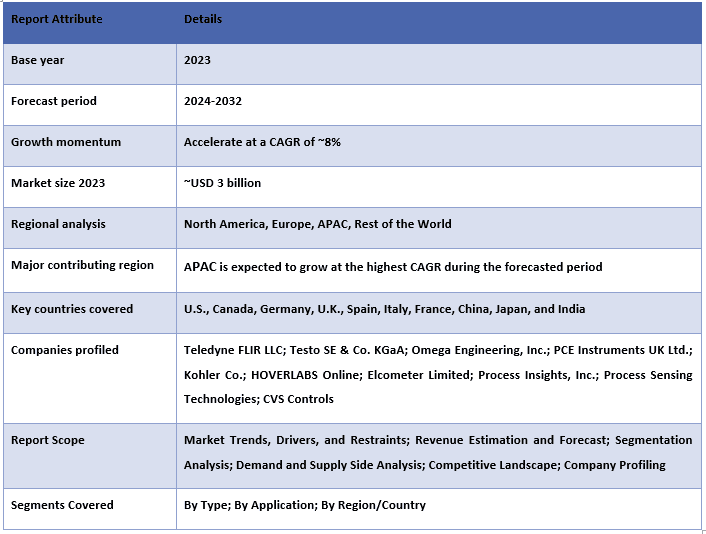
Lý do nên mua báo cáo này:
- Nghiên cứu bao gồm phân tích kích thước thị trường và dự báo được xác thực bởi các chuyên gia hàng đầu trong ngành đã được xác thực.
- Báo cáo trình bày một đánh giá nhanh về hiệu suất chung của ngành trong nháy mắt.
- Báo cáo bao gồm phân tích chuyên sâu về các đối thủ trong ngành nổi bật, tập trung chủ yếu vào các số liệu tài chính kinh doanh chính, danh mục loại hình, chiến lược mở rộng và các phát triển gần đây.
- Kiểm tra chi tiết các động lực, hạn chế, xu hướng chính và cơ hội hiện hành trong ngành.
- Nghiên cứu bao gồm toàn diện thị trường trên các phân khúc khác nhau.
- Phân tích sâu sắc ở cấp độ khu vực của ngành.
Tùy chọn tùy chỉnh:
Thị trường nhiệt kế điểm sương toàn cầu có thể được tùy chỉnh thêm theo yêu cầu hoặc bất kỳ phân khúc thị trường nào khác. Bên cạnh đó, UMI hiểu rằng bạn có thể có nhu cầu kinh doanh riêng, vì vậy hãy thoải mái liên hệ với chúng tôi để nhận một báo cáo hoàn toàn phù hợp với yêu cầu của bạn.
Mục lục
Phương Pháp Nghiên Cứu cho Phân Tích Thị Trường Nhiệt Kế Điểm Sương Toàn Cầu (2024-2032)
Phân tích thị trường lịch sử, ước tính thị trường hiện tại và dự báo thị trường tương lai của thị trường nhiệt kế điểm sương toàn cầu là ba bước chính được thực hiện để tạo và phân tích việc áp dụng nhiệt kế điểm sương toàn cầu ở các khu vực chính trên toàn cầu. Nghiên cứu thứ cấp toàn diện đã được tiến hành để thu thập các số liệu thị trường lịch sử và ước tính quy mô thị trường hiện tại. Thứ hai, để xác thực những hiểu biết sâu sắc này, nhiều phát hiện và giả định đã được xem xét. Hơn nữa, các cuộc phỏng vấn sơ cấp toàn diện cũng đã được thực hiện, với các chuyên gia trong ngành trên toàn bộ chuỗi giá trị của thị trường nhiệt kế điểm sương toàn cầu. Sau khi giả định và xác thực các số liệu thị trường thông qua các cuộc phỏng vấn sơ cấp, chúng tôi đã sử dụng phương pháp tiếp cận từ trên xuống/từ dưới lên để dự báo quy mô thị trường hoàn chỉnh. Sau đó, các phương pháp phân tích thị trường và phân tích dữ liệu tam giác đã được áp dụng để ước tính và phân tích quy mô thị trường của các phân khúc và phân khúc phụ của ngành liên quan đến. Phương pháp chi tiết được giải thích dưới đây:
Phân Tích Quy Mô Thị Trường Lịch Sử
Bước 1: Nghiên Cứu Sâu về Các Nguồn Thứ Cấp:
Một nghiên cứu thứ cấp chi tiết đã được tiến hành để thu thập quy mô thị trường lịch sử của thị trường Nhiệt kế điểm sương toàn cầu thông qua các nguồn nội bộ của công ty như báo cáo thường niên & báo cáo tài chính, các bài thuyết trình về hiệu suất, thông cáo báo chí, v.v. và các nguồn bên ngoài bao gồm tạp chí, tin tức & bài viết, các ấn phẩm của chính phủ, các ấn phẩm của đối thủ cạnh tranh, báo cáo ngành, cơ sở dữ liệu của bên thứ ba và các ấn phẩm đáng tin cậy khác.
Bước 2: Phân Khúc Thị Trường:
Sau khi thu thập được quy mô thị trường lịch sử của thị trường nhiệt kế điểm sương toàn cầu, chúng tôi đã tiến hành một phân tích thứ cấp chi tiết để thu thập những hiểu biết sâu sắc về thị trường lịch sử và chia sẻ cho các phân khúc & phân khúc phụ khác nhau cho các khu vực chính. Các phân khúc chính được bao gồm trong báo cáo như loại, ứng dụng và khu vực. Các phân tích cấp quốc gia hơn nữa đã được tiến hành để đánh giá việc áp dụng tổng thể các mô hình thử nghiệm trong khu vực đó.
Bước 3: Phân Tích Yếu Tố:
Sau khi có được quy mô thị trường lịch sử của các phân khúc và phân khúc phụ khác nhau, chúng tôi đã tiến hành phân tích yếu tố chi tiết để ước tính quy mô thị trường hiện tại của thị trường Nhiệt kế điểm sương toàn cầu. Hơn nữa, chúng tôi đã tiến hành phân tích yếu tố bằng cách sử dụng các biến phụ thuộc và độc lập như loại, ứng dụng và khu vực của thị trường Nhiệt kế điểm sương toàn cầu. Một phân tích kỹ lưỡng đã được tiến hành về các kịch bản cung và cầu xem xét các quan hệ đối tác hàng đầu, sáp nhập và mua lại, mở rộng kinh doanh và ra mắt loại hình trong lĩnh vực thị trường Nhiệt kế điểm sương toàn cầu trên toàn cầu.
Ước Tính & Dự Báo Quy Mô Thị Trường Hiện Tại
Định cỡ thị trường hiện tại: Dựa trên những hiểu biết sâu sắc có thể hành động từ 3 bước trên, chúng tôi đã đi đến quy mô thị trường hiện tại, những người chơi chính trong thị trường Nhiệt kế điểm sương toàn cầu và thị phần của các phân khúc. Tất cả các tỷ lệ phần trăm cần thiết và phân tích thị trường đã được xác định bằng cách sử dụng phương pháp thứ cấp đã đề cập ở trên và đã được xác minh thông qua các cuộc phỏng vấn sơ cấp.
Ước tính & Dự báo: Đối với ước tính và dự báo thị trường, trọng số đã được gán cho một số yếu tố bao gồm các động lực & xu hướng, hạn chế và cơ hội có sẵn cho các bên liên quan. Sau khi phân tích các yếu tố này, các kỹ thuật dự báo có liên quan, tức là phương pháp tiếp cận từ trên xuống/từ dưới lên đã được áp dụng để đi đến dự báo thị trường cho năm 2032 cho các phân khúc và phân khúc phụ khác nhau trên các thị trường chính trên toàn cầu. Phương pháp nghiên cứu được áp dụng để ước tính quy mô thị trường bao gồm:
- Quy mô thị trường của ngành, về doanh thu (USD) và tỷ lệ chấp nhận của thị trường Nhiệt kế điểm sương toàn cầu trên các thị trường chính trong nước
- Tất cả các tỷ lệ phần trăm, phân chia và phân tích của các phân khúc thị trường và phân khúc phụ
- Những người chơi chính trong thị trường nhiệt kế điểm sương toàn cầu về các loại được cung cấp. Ngoài ra, các chiến lược tăng trưởng được các người chơi này áp dụng để cạnh tranh trong thị trường đang phát triển nhanh chóng
Xác Thực Quy Mô và Thị Phần Thị Trường
Nghiên cứu sơ cấp: Các cuộc phỏng vấn chuyên sâu đã được thực hiện với các nhà lãnh đạo ý kiến chủ chốt (KOL) bao gồm các giám đốc điều hành cấp cao (CXO/VPs, Trưởng phòng kinh doanh, Trưởng phòng tiếp thị, Trưởng phòng vận hành, Trưởng phòng khu vực, Trưởng phòng quốc gia, v.v.) trên khắp các khu vực chính. Các phát hiện nghiên cứu sơ cấp sau đó được tóm tắt và phân tích thống kê đã được thực hiện để chứng minh giả thuyết đã nêu. Thông tin đầu vào từ nghiên cứu sơ cấp đã được hợp nhất với các phát hiện thứ cấp, do đó biến thông tin thành những hiểu biết sâu sắc có thể hành động.
Phân Chia Người Tham Gia Sơ Cấp ở Các Khu Vực Khác Nhau
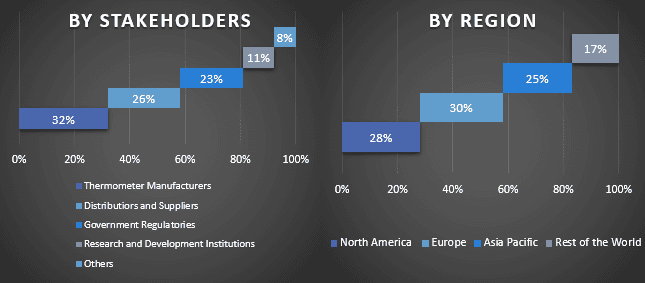
Kỹ Thuật Thị Trường
Kỹ thuật phân tích dữ liệu tam giác đã được sử dụng để hoàn thành ước tính thị trường tổng thể và để đưa ra các số liệu thống kê chính xác cho từng phân khúc và phân khúc phụ của thị trường Nhiệt kế điểm sương toàn cầu. Dữ liệu được chia thành nhiều phân khúc và phân khúc phụ sau khi nghiên cứu các thông số và xu hướng khác nhau về loại, ứng dụng và khu vực trong thị trường nhiệt kế điểm sương toàn cầu.
Mục tiêu chính của Nghiên cứu Thị trường Nhiệt kế Điểm sương Toàn cầu
Các xu hướng thị trường hiện tại & tương lai của thị trường nhiệt kế điểm sương Toàn cầu đã được xác định chính xác trong nghiên cứu. Các nhà đầu tư có thể đạt được những hiểu biết chiến lược để dựa vào quyết định của họ cho các khoản đầu tư dựa trên phân tích định tính và định lượng được thực hiện trong nghiên cứu. Các xu hướng thị trường hiện tại và tương lai xác định mức độ hấp dẫn tổng thể của thị trường ở cấp khu vực, cung cấp một nền tảng cho người tham gia công nghiệp khai thác thị trường chưa được khai thác để hưởng lợi từ lợi thế của người đi đầu. Các mục tiêu định lượng khác của các nghiên cứu bao gồm:
- Phân tích quy mô thị trường hiện tại và dự báo của thị trường Nhiệt kế điểm sương toàn cầu về giá trị (USD). Ngoài ra, hãy phân tích quy mô thị trường hiện tại và dự báo của các phân khúc và phân khúc phụ khác nhau.
- Các phân khúc trong nghiên cứu bao gồm các lĩnh vực loại, ứng dụng và khu vực.
- Xác định và phân tích khung pháp lý cho ngành.
- Phân tích chuỗi giá trị liên quan đến sự hiện diện của nhiều trung gian khác nhau, cùng với việc phân tích hành vi của khách hàng và đối thủ cạnh tranh của ngành.
- Phân tích quy mô thị trường hiện tại và dự báo của thị trường nhiệt kế điểm sương toàn cầu cho các khu vực chính.
- Các quốc gia chính của các khu vực được nghiên cứu trong báo cáo bao gồm Châu Á Thái Bình Dương, Châu Âu, Bắc Mỹ và Phần còn lại của Thế giới
- Hồ sơ công ty của thị trường nhiệt kế điểm sương toàn cầu và các chiến lược tăng trưởng được các người chơi thị trường áp dụng để duy trì trong thị trường đang phát triển nhanh chóng.
- Phân tích sâu cấp khu vực của ngành
Câu hỏi thường gặp Câu hỏi thường gặp
Câu hỏi 1: Kích thước thị trường hiện tại và tiềm năng tăng trưởng của thị trường nhiệt kế điểm sương toàn cầu là gì?
Q2: Đâu là những yếu tố thúc đẩy sự tăng trưởng của thị trường nhiệt kế điểm sương toàn cầu?
Q3: Phân khúc nào có thị phần lớn nhất trong thị trường nhiệt kế điểm sương toàn cầu theo danh mục loại?
Q4: Các công nghệ và xu hướng mới nổi trong thị trường Nhiệt kế điểm sương toàn cầu là gì?
Câu hỏi 5: Khu vực nào sẽ chiếm lĩnh thị trường nhiệt kế điểm sương toàn cầu?
Liên quan Báo cáo
Khách hàng đã mua mặt hàng này cũng đã mua



